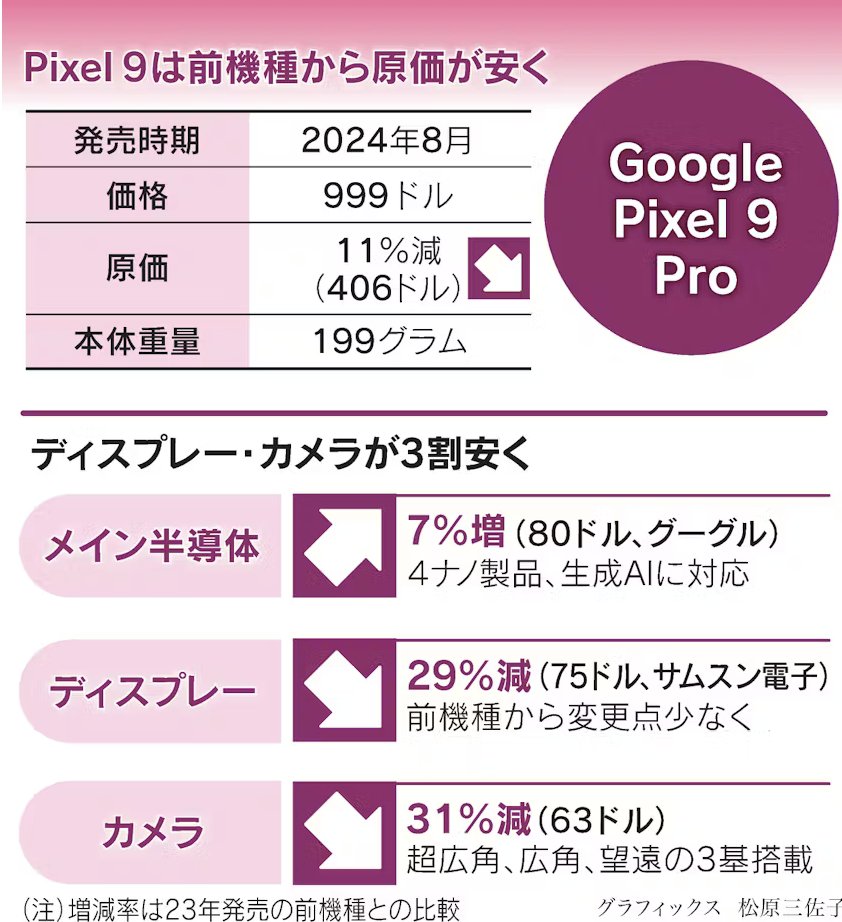
Dhruv Bhutani / Android Authority
TL;DR
- A new Nikkei report reveals the cost of materials (BOM) for the Pixel 9 Pro and iPhone 16 Pro, showing what Google and Apple spend on core components.
- The Pixel 9 Pro’s total BOM is roughly $406, significantly lower than the iPhone 16 Pro’s BOM of $568.
- These BOM costs don’t cover additional expenses like marketing, shipping, and R&D, which are also factored into the retail price.
This year, Google took a bold step by launching its Pixel 9 series much earlier in the calendar, a move widely seen as a direct attempt to compete head-to-head with Apple’s iPhone 16 series. This gamble appears to have paid off handsomely, with Pixel 9 sales figures painting a picture of success. A new report by Nikkei now offers a fascinating look behind the scenes at the production costs of these two popular flagships, the Pixel 9 Pro and iPhone 16 Pro, each retailing at around $1,000. (h/t: 9to5Google)
Google’s Pixel 9 Pro is reported to have cost just over $400 in raw materials, or the “bill of materials” (BOM) — the price for the parts that make up the device. The BOM represents the combined cost of every physical part needed to build the device and serves as a baseline indicator of production costs.
User @Jukanlosreve on X shared a further breakdown of the Pixel 9 Pro BOM, and we can see that the most expensive component is the Tensor G4 chipset, Google’s in-house silicon, which accounts for $80 of the total cost. Following closely behind is the Samsung-made M14 display panel, which contributes $75 to the BOM. The camera components, a crucial aspect of the Pixel’s renowned photography capabilities, come in at $61.

Interestingly, the report suggests that the Pixel 9 Pro’s BOM cost is about 11% lower than that of the Pixel 8 Pro. However, it’s important to note that this comparison might not be entirely apples-to-apples as the Pixel 9 Pro is technically an all-new model in the series. A more accurate comparison would involve the Pixel 9 Pro XL and the Pixel 8 Pro, as the 9 Pro XL is the true successor to the Pixel 8 Pro.
The Nikkei report also provides insights into the BOM cost of the iPhone 16 Pro, which is estimated to be $568, a slight increase from the iPhone 15 Pro. For Apple, the M14 display is one of the priciest components at $110, with camera parts costing about $91.
Apple’s A18 Pro chip is reportedly priced at $135, a notable bump from Google’s BOM that could be a direct reflection of the real-world performance gap between the latest Tensor and Apple chips. For what it’s worth, Qualcomm’s Snapdragon 8 Elite, which will power the best Android phones in 2025, is reportedly priced even higher at just under $200, which will most likely result in phone prices going up.
It’s crucial to remember that the BOM cost represents only a fraction of the total cost involved in bringing a smartphone to market. Other factors, such as research and development, marketing, shipping, and distribution, also contribute significantly to the final retail price. However, the BOM still serves as a valuable snapshot of each company’s strategies.









